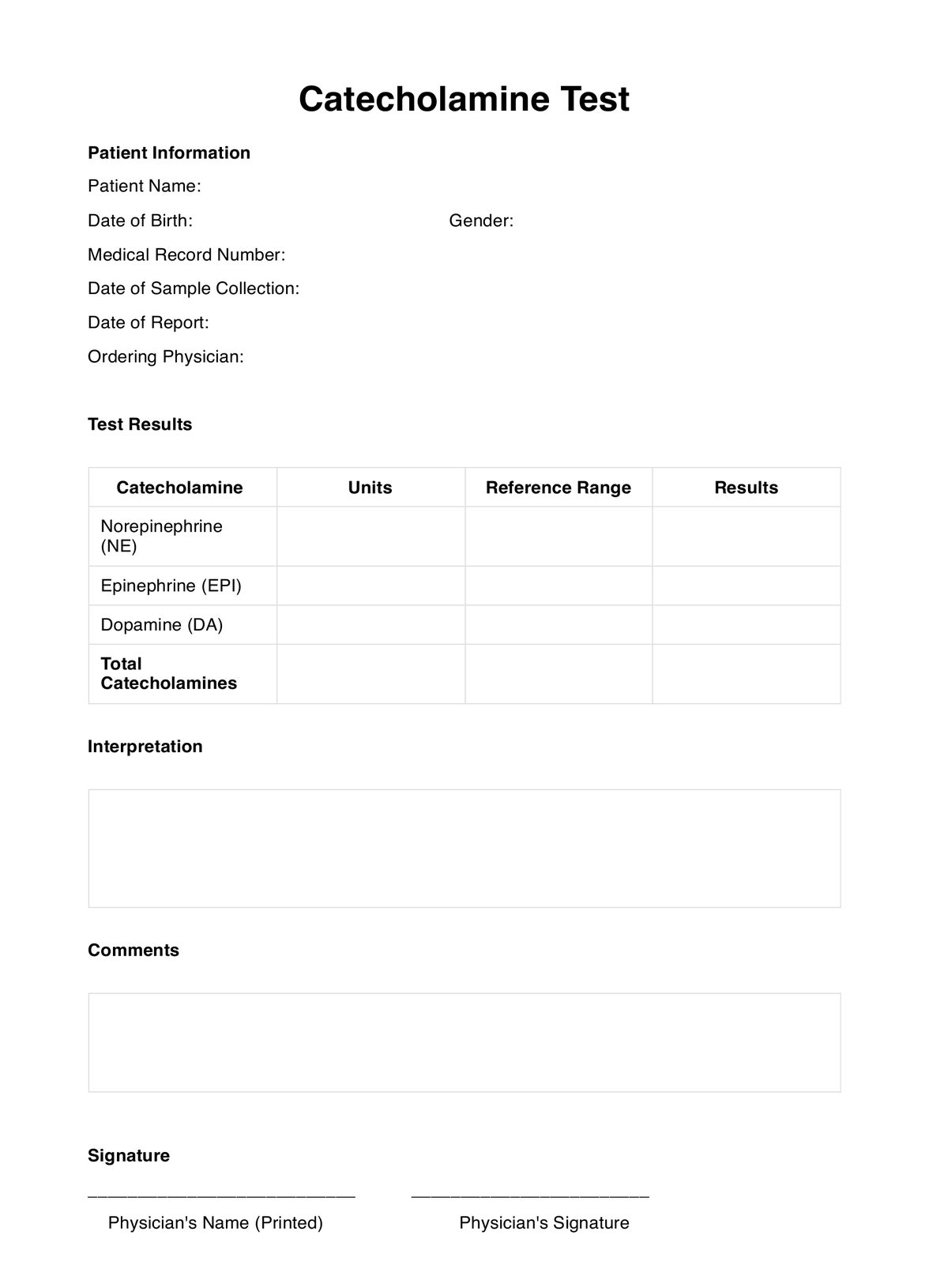These tests are typically ordered by specialists like endocrinologists, oncologists, cardiologists, and primary care physicians when they suspect catecholamine-related conditions.

Catecholamine
Learn about the Catecholamine Test, vital for diagnosing pheochromocytoma and neuroblastoma, ensuring effective treatment.
Use Template
Catecholamine Template
Commonly asked questions
The tests diagnose and monitor conditions like pheochromocytoma, neuroblastoma, and hypertension. They're employed when symptoms or clinical signs suggest catecholamine imbalances.
It involves collecting blood or urine samples, which are then sent to a lab for analysis. Blood tests provide real-time measurements, while urine tests may require 24-hour collection for accurate results.
EHR and practice management software
Get started for free
*No credit card required
Free
$0/usd
Unlimited clients
Telehealth
1GB of storage
Client portal text
Automated billing and online payments











